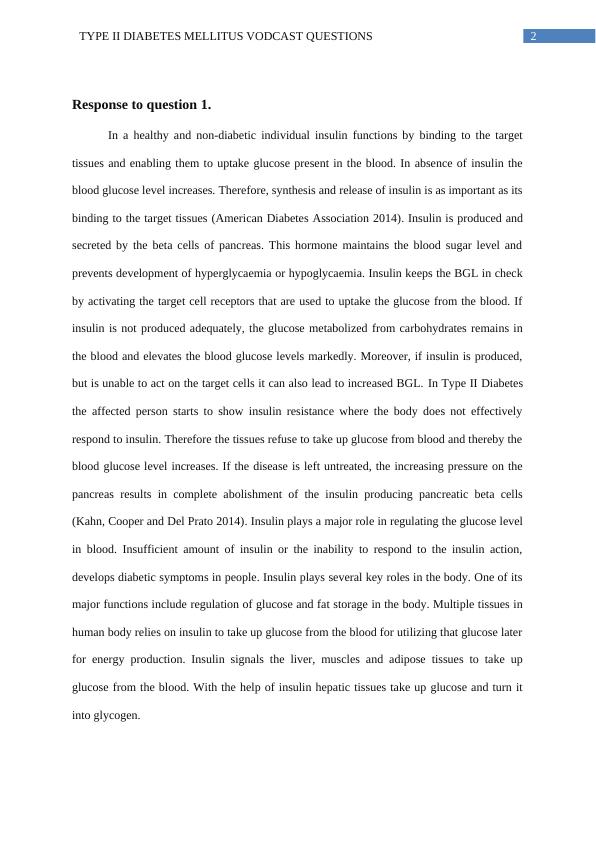Type II Diabetes Mellitus Vodcast Questions
8 Pages1999 Words483 Views
Added on 2023-06-04
About This Document
This article discusses Type II Diabetes Mellitus through vodcast questions. It covers patient criteria, response to questions, and treatment options. The patient is a 54-year-old female with a sedentary lifestyle and prescribed medication of Metformin, Dapagliflozin, and Insulin. The article also provides references for further reading.
Type II Diabetes Mellitus Vodcast Questions
Added on 2023-06-04
ShareRelated Documents
End of preview
Want to access all the pages? Upload your documents or become a member.
Vodcast on Type II Diabetes Mellitus
|10
|968
|75
Type II Diabetes Mellitus - A Brief Presentation
|7
|889
|64
Pathophysiology of Type 2 Diabetes Mellitus
|9
|837
|20
Question 1 Insulin synthesis and binding to target tissues is
|2
|436
|33
Physiology and Consequences of Type 2 Diabetes Mellitus
|22
|1236
|30
Nursing Assignment: Diabetes Mellitus Case Study
|9
|1531
|49



